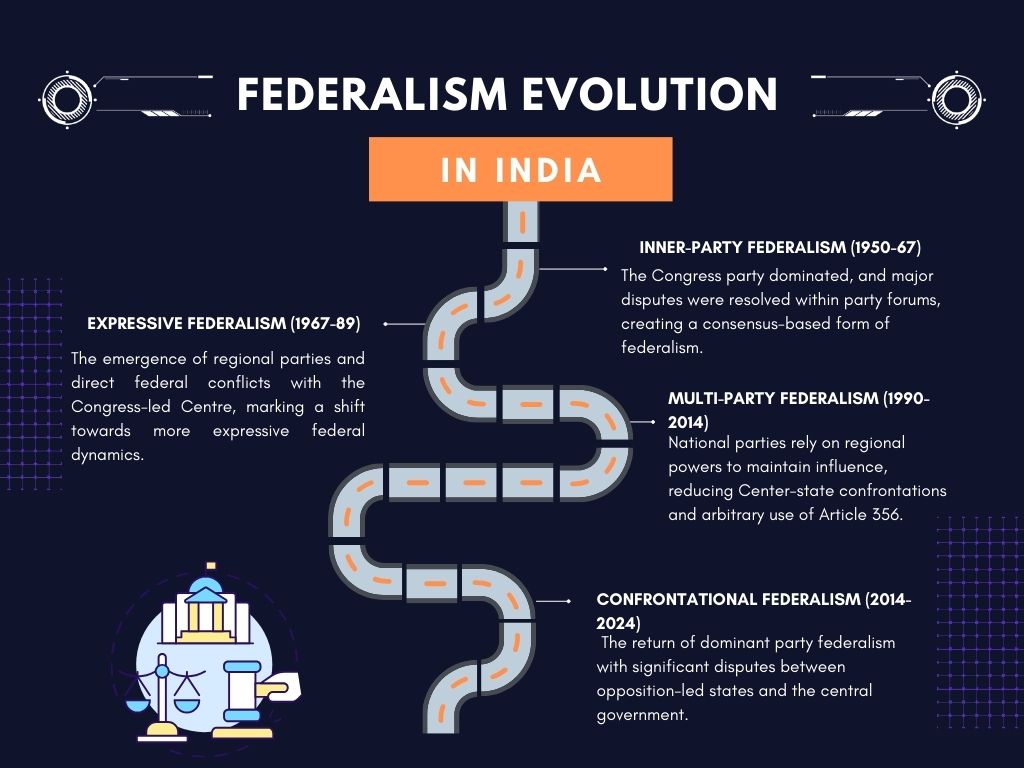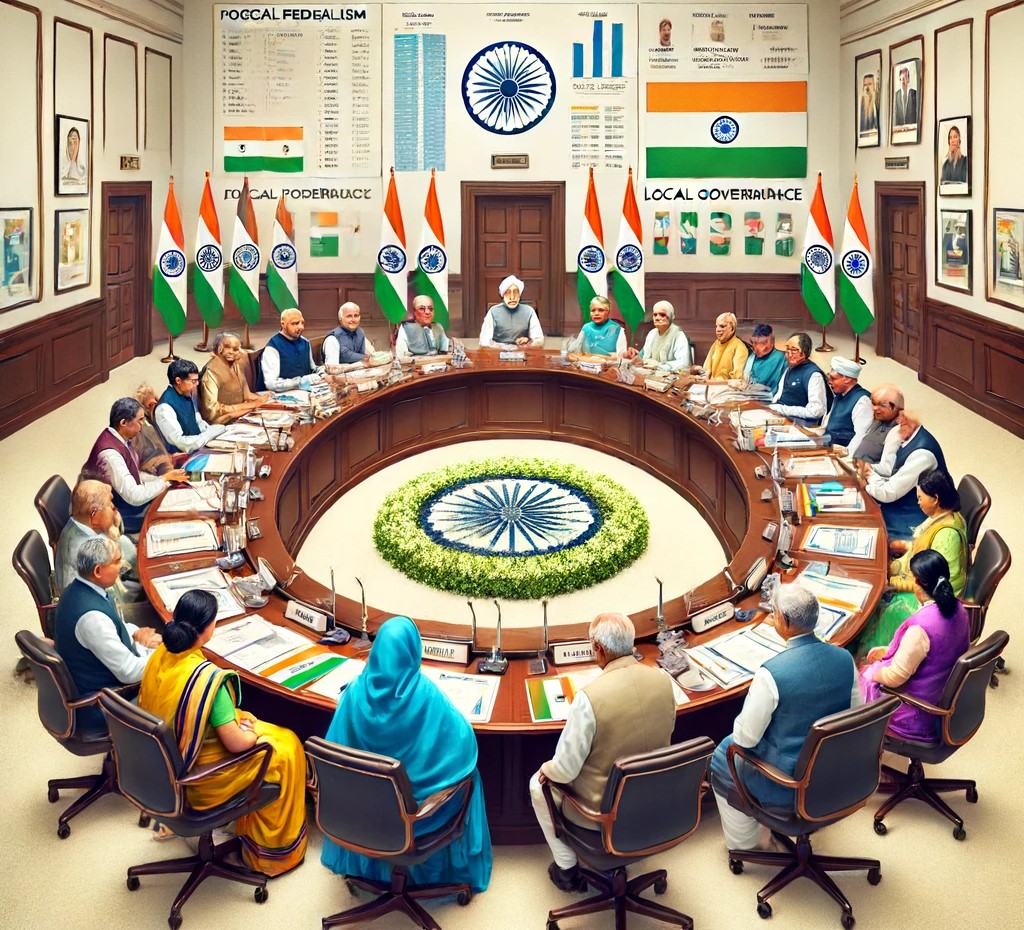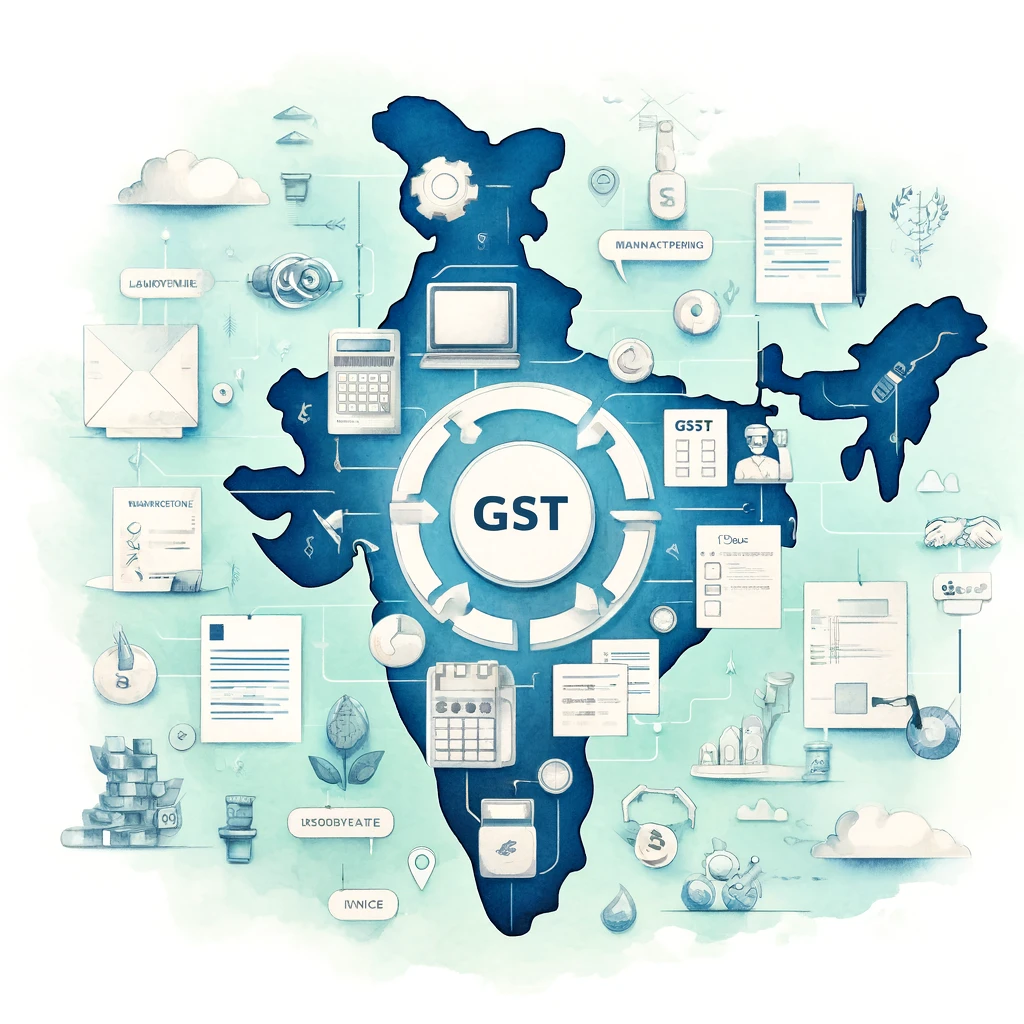The resurgence of coalition politics at the center brings regional parties into center stage, challenging the trend of centralized decision-making. Recent debates have thus focused on the need for a new federal compact balancing Centre-state relations. Cooperative and competitive India’s federalism through institutions like NITI Aayog has not been without several pushes from states over GST compensation and other issues. The vision of “one nation, one election” has also evoked mixed reactions. It is a moment to rebuild and rejuvenate trust while strengthening India’s federal framework.
Origin of the Article
This editorial is based on “This is the moment for a new federal compact,” published in The Indian Express on 11/06/2024. The article explores the resurgence of coalition politics and its impact on federalism in India.
Relevancy for UPSC Students
For UPSC students, understanding the dynamics of federalism is crucial for both Prelims and Mains. This topic is directly related to GS Paper 2 and helps in grasping center-state relations, cooperative and competitive federalism, and the evolution of federalism in India.

Why in News
The resurgence of coalition politics at the central level has reignited debates on federalism in India, making it a pertinent topic for UPSC aspirants. This issue intersects with previous UPSC questions on Centre-State relations, cooperative federalism, and the division of powers. Understanding these dynamics is crucial for tackling questions on federalism’s evolution, challenges, and the need for a balanced federal structure in India.
What is Federalism?
Federalism is a system of governance where powers and responsibilities are divided between a central government and regional state governments. Its primary purpose is to maintain unity while allowing regional self-governance. This distribution of powers ensures that different regions can manage their own affairs while being part of a larger political entity.
Features of Federalism:
Division of Powers: Federalism involves a clear division of powers between the central and state governments, ensuring that each level has its own areas of influence.
Written Constitution: A written constitution is essential, as it explicitly delineates the powers and functions of different government levels.
Supremacy of the Constitution: The constitution is the supreme law that governs the relationship between the central and state governments.
Independent Judiciary: An independent judiciary plays a crucial role in interpreting the Constitution and resolving disputes between different levels of government.
Dual Government: Federalism features a dual government system where both central and state governments operate in their respective domains.
Rigid Constitution: The Constitution is typically rigid, meaning it requires a special procedure for amendments, ensuring stability and continuity.
Types:
Holding Together Federation: This type involves a central authority sharing power with constituent states to maintain unity. Examples include India, Spain, and Belgium.
Coming Together Federation: Here, independent states come together to form a larger union, with states retaining significant autonomy. Examples include the USA, Australia, and Switzerland.
Asymmetrical Federation: In this model, some states have more powers or special status due to historical or cultural reasons. Examples include Canada, Russia, and Ethiopia.
Nature of Indian Federalism
India’s federalism is characterized by a strong central government while maintaining a federal structure. Scholars have described it in various terms, such as “Quasi-federal” by KC Wheare, “Cooperative federalism” by Granville Austin, and “Federalism with Centralizing tendency” by Ivor Jenning.
Constitutional Provisions
Seventh Schedule: This divides powers between the Union and states through the Union List, State List, and Concurrent List.
Article 1: Defines India as a Union of States.
Article 245: Grants Parliament and state legislatures the power to make laws within their respective jurisdictions.
Article 246: Enumerates the subject matters on which Parliament and state legislatures can legislate.
Article 263: Provides for the establishment of an Inter-State Council to promote cooperative federalism.
Article 279-A: Empowers the President to constitute a GST Council.
How did the Concept of India’s Federalism Evolved?

The evolution of federalism in India can be categorized into phases: Inner-party federalism, expressive federalism, multi-party federalism, and confrontational federalism.
Inner-Party Federalism (1950-67)
During this phase, the Congress party dominated, and major disputes were resolved within party forums, creating a consensus-based form of federalism.
Expressive Federalism (1967-89)
This phase saw the emergence of regional parties and direct federal conflicts with the Congress-led Centre, marking a shift towards more expressive federal dynamics.
Multi-Party Federalism (1990-2014)
The coalition era saw national parties relying on regional powers to maintain influence, reducing Center-state confrontations and arbitrary use of Article 356.
Confrontational Federalism (2014-2024)
This period saw the return of dominant party federalism with significant disputes between opposition-led states and the central government.
Why is there a Need to Strengthen Federalism in India?
Strengthening federalism is crucial for accommodating India’s diverse demographics, preventing central overreach, empowering local bodies, and ensuring fiscal federalism.
Diverse Demographics and Cultures
Linguistic Diversity: Strengthening federalism preserves linguistic identities.
Cultural Plurality: It allows for the celebration of unique cultural practices.
Avoiding Central Overreach
Safeguarding Rights of State: Enhancing state autonomy is essential.
Accommodating Regional Aspirations: Addressing political aspirations reduces separatism.
Empowering Local Bodies
Panchayati Raj Institutions: They play a critical role in grassroots democracy and development.
Women’s Participation: Promoting gender equality in local governance is vital.
Fiscal Federalism
Fair Revenue Distribution: Equitable distribution of financial resources is necessary.
State Autonomy in Spending: States should have greater control over their finances.
Key Challenges to Federalism in India
Indian federalism faces challenges such as centralization, regionalism, discontent, power division disputes, and misuse of constitutional provisions.

Balancing Centralization and Regionalism
Maintaining a balance between central authority and state autonomy is crucial to ensuring national unity while respecting regional needs.
Regional Discontent
Regionalism often manifests in demands for autonomy based on language and culture, leading to internal security challenges.
Disputes in Division of Powers
Conflicts over jurisdictional issues, especially on concurrent List subjects like agriculture, are common.
Misuse of Governor’s Office
Concerns regarding the arbitrary dismissal of state governments and manipulation in government formation are prevalent.
Misuse of Article 356
Historical misuse of this provision has disrupted state autonomy, although its usage has decreased over time.
Fiscal Imbalances
Unequal Revenue Distribution: Issues with fund distribution and fiscal stress are common.
GST Compensation Issues: Delays in compensation hamper state financial planning.
Asymmetric Representation in Parliament
Representation disparities between populous and smaller states affect political balance.
Inter-State Disputes
The federal structure strains water sharing, boundary disagreements, and resource allocation issues.
Economic Disparities
Competition for Investment: Regional inequalities arise from imbalanced investment.
Regional Inequality: Economic disparity among states is a persistent issue.
What Federal Demands Could Arise with the Return of Coalition Politics in India?
Coalition politics could lead to demands such as delimitation, a fair redistributive model, special category status, and divergence from the simultaneous election vision.
Pending Exercise of Delimitation
Swift delimitation is demanded by states with controlled population growth for increased representation.
Legitimacy of the Redistributive Model
Equitable GST redistribution is a major concern for economically robust states.
Demand for Special Category Status
States with unique developmental challenges seek special category status for additional central support.
Divergence from “One Nation, One Election” Vision
Simultaneous elections are seen as undermining India’s federalism by prioritizing uniformity over regional contexts.
What Steps Are Necessary to Strengthen India’s Federal Framework?
Steps to reinforce India’s federal framework include devolution of powers, equitable development, strengthening inter-governmental institutions, and fostering cooperative and competitive federalism.
Enhancing Devolution of Powers
Increasing powers and resources to states and local bodies is essential for effective governance.
Ensuring Equitable Development
Resource Sharing Formula: Transparent distribution of central funds is necessary.
Addressing Regional Disparities: Special assistance for backward regions is vital.
Strengthening Inter-governmental Institutions
Revitalizing the Inter-State Council for effective dispute resolution and cooperation on national issues is crucial.
Enhancing Communication and Coordination
Regular communication between the Centre and States ensures smoother policy implementation.
Fostering Cooperative and Competitive Federalism
Cooperative Federalism: Joint efforts on national issues are essential.
Competitive Federalism: States competing for better governance practices foster innovation.
Respecting Federal Principles and Spirit
Minimizing Central Intervention: Avoid excessive use of Articles 355 and 356.
Ensuring Greater Representation and Participation: Transparent and consultative appointments are necessary for greater state involvement.
Conclusion
The evolving political landscape, marked by the resurgence of coalition politics and the increasing influence of regional parties, offers a unique opportunity to redefine and strengthen the federal structure. A forward-looking approach to federalism in India will celebrate its diversity, foster cooperation, and build a harmonious and prosperous future for all its citizens. This is not just a political necessity but a testament to the resilience and unity that define the Indian Republic.
| UPSC Civil Services Examination, Previous Year Questions (PYQs) Mains Q. Discuss the challenges and prospects of cooperative federalism in achieving sustainable development goals in India. (GS-III, 2022) Q. Analyze the effectiveness of the Fifteenth Finance Commission’s recommendations in promoting fiscal federalism in India. (GS-II, 2022) |

